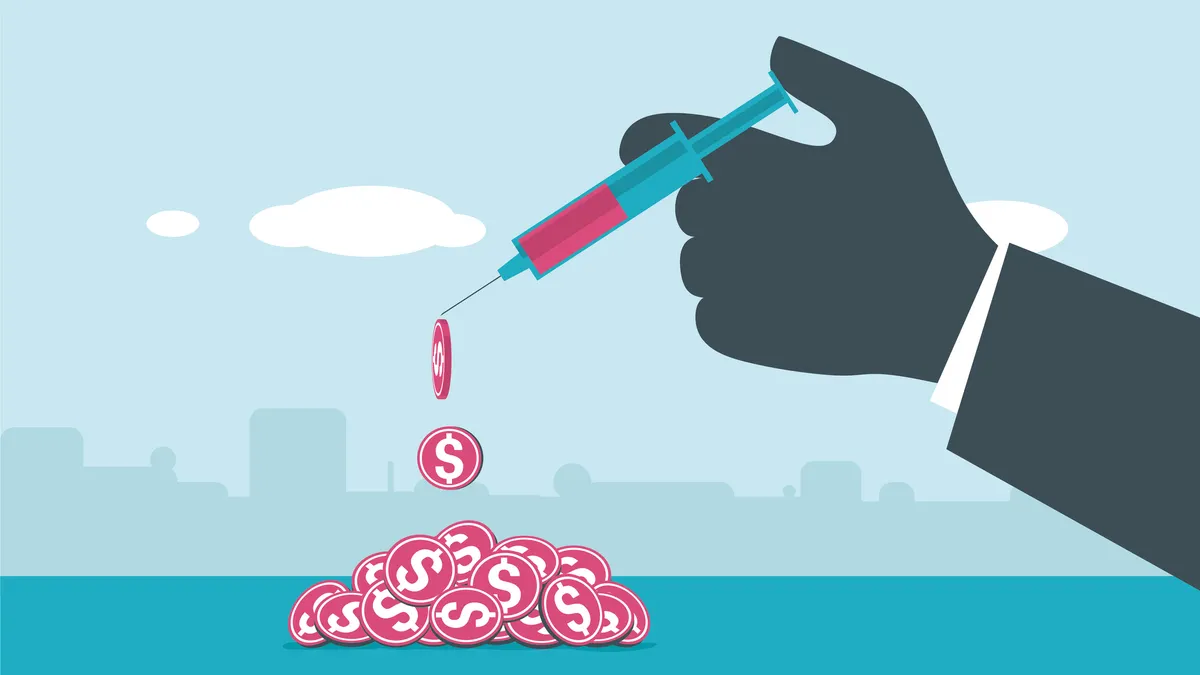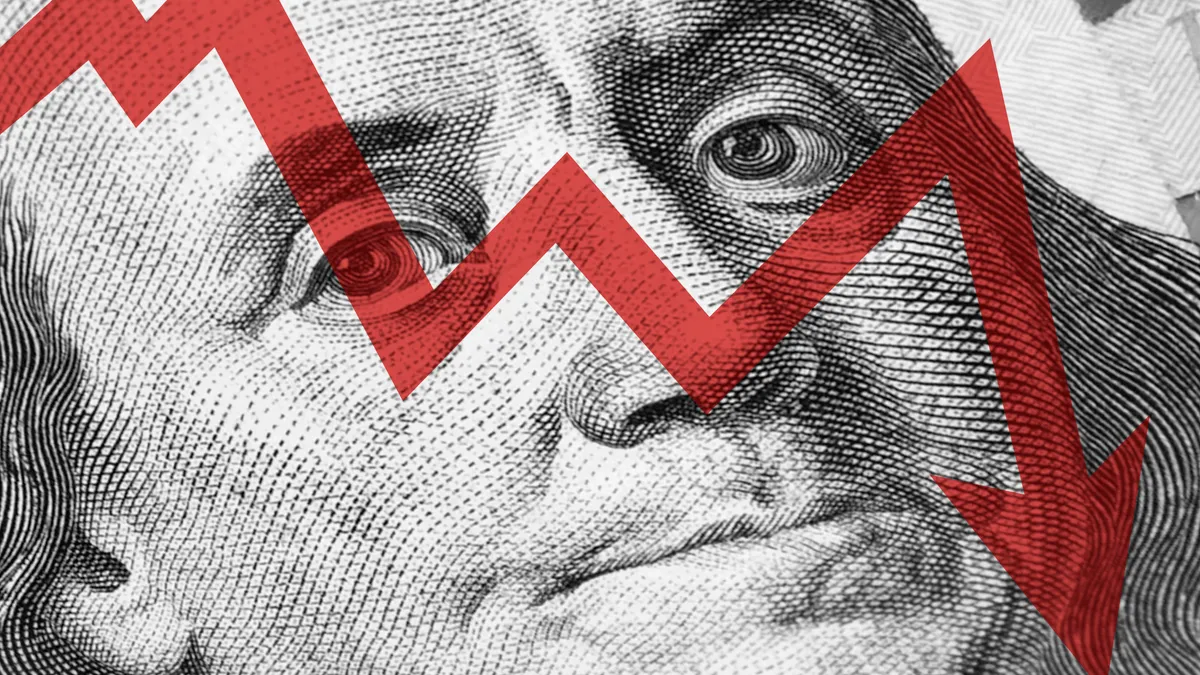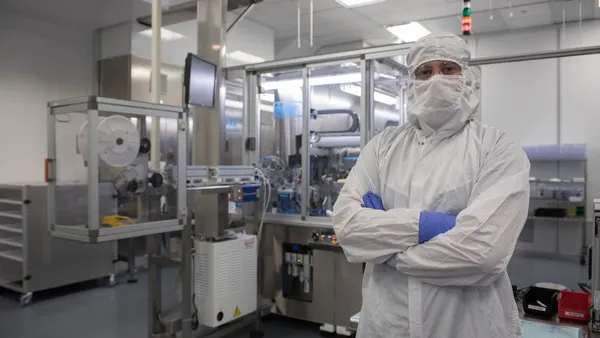Someday, a bandage controlled by a smart phone could heal chronic wounds. Soon, a body-on-a-chip system could reduce the use of animal testing and more speedily advance personalized medicine.
These are just two examples of how innovative technology is creating a new healthcare ecosystem, one in which the pharma industry will have to stretch its collaboration muscle in order to stay ahead of the curve. Several companies have already begun the journey into the 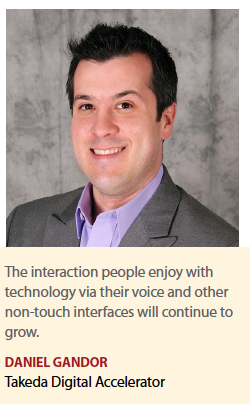 technology future by partnering with organizations outside of their own capabilities for solutions. Reports show collaborations between innovative healthcare companies and pharma companies are growing.
technology future by partnering with organizations outside of their own capabilities for solutions. Reports show collaborations between innovative healthcare companies and pharma companies are growing.
For example, just this year Boehringer Ingelheim and Geisinger partnered to create a predictive risk model for people with type 2 diabetes. Takeda’s Digital Accelerator is funding digital projects that provide better health. Pfizer and the American Lung Association partnered to create the very successful Quitter’s Circle smoking-cessation app and also recently launched the LivingWith app for patients with cancer.
At Janssen, packaging teams partnered with external electronics and labeling suppliers to create electronic labeling and a health reminder software application that collects objective and granular data about patient adherence to treatment.
“To successfully integrate technology into everyday healthcare practices, collaboration will be key," says Gabriele Ricci, VP, head of digital health and emerging technology, Shire. “At Shire, we seek the best complementary minds in technology to enhance our digital capabilities. Through these partnerships, we can push the boundaries of what is possible and improve outcomes for patients."
For instance, Shire has formed partnerships with digital incubators to scan the market for disruptive innovations that can help it accelerate diagnostic capabilities, create efficiencies within clinical trials, and improve patient efficacy and safety outcomes with its medicines.
According to Jake LaPorte, Ph.D., head of digital development, Novartis, if a company is not asking how Google, Apple, or other major technology players could completely disrupt the pharmaceutical business model, then they are not preparing for likely possibilities. Dr. LaPorte says Novartis is asking those questions and looking at developing completely new paradigms in drug discovery and development that seek to leverage technology holistically and are not beholden to antiquated processes and SOPs.
The Impact of Healthcare Technology
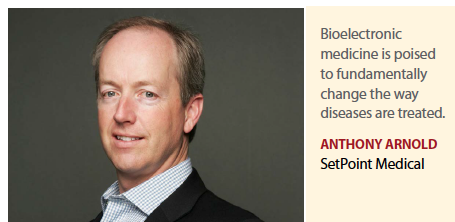 Healthcare technology has already begun to impact the entire product life cycle. On the commercial side, it is being used to create new ways to collect data, to increase communication, enable EHRs, and provide mobile apps that improve patient outcomes.
Healthcare technology has already begun to impact the entire product life cycle. On the commercial side, it is being used to create new ways to collect data, to increase communication, enable EHRs, and provide mobile apps that improve patient outcomes.
Innovative technology will shape everything from medical innovation to physician-patient interaction and patient compliance in the very near future.
“Digital technologies have incredible potential to unlock the next chapter of groundbreaking medical innovation," Dr. LaPorte says. “For technology to make an impact in healthcare, the pharmaceutical sector needs to embrace the change that accompanies converging with the inherently agile world of technology, and leverage these capabilities with its own expertise in the long and highly complex journey to develop, trial, and secure regulatory approval for medicines."
Technological innovations are critically important to driving better patient outcomes and improved global health, Mr. Ricci adds.
“We are working to address healthcare technology barriers that make it difficult for patients to navigate the healthcare system," he says.
“Technologies that support patient experience through enhanced drug delivery, companion apps, patient registries and communities, and access to relevant content are likely to make a positive impact. The technologies that will be most impactful will be those that empower patients to be active participants in their own treatment."
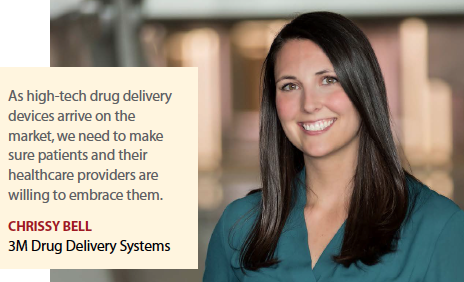 At Janssen Research & Development’s World Without Disease Accelerator, Global Head Ben Wiegand, Ph.D., says to truly realize technology’s full potential in healthcare, applications need to do more than just track and manage disease — they also need to serve a therapeutic purpose. Dr. Wiegand cites start-up Carrot’s digital approach to smoking cessation as a prime example. The quit-smoking program includes mobile coaching and an FDA-cleared carbon monoxide breath sensor for at-home use. The sensor pairs with Bluetooth to a smartphone, so it can track levels over time through an app.
At Janssen Research & Development’s World Without Disease Accelerator, Global Head Ben Wiegand, Ph.D., says to truly realize technology’s full potential in healthcare, applications need to do more than just track and manage disease — they also need to serve a therapeutic purpose. Dr. Wiegand cites start-up Carrot’s digital approach to smoking cessation as a prime example. The quit-smoking program includes mobile coaching and an FDA-cleared carbon monoxide breath sensor for at-home use. The sensor pairs with Bluetooth to a smartphone, so it can track levels over time through an app.
“In the future, we envision empowering individuals with digital therapeutic solutions that address underlying motivational and behavioral deficits of targeted diseases by deciphering neural pathways that support motivation, decision-making, and reinforcement to promote health," Dr. Wiegand says.
Another development at Janssen includes Smart Packaging Technology that helps patients and doctors make informed future healthcare decisions through concrete data. As such, the team developed the Janssen Smart Packaging Technology, which empowers patients and HCPs to have informed discussions that result from a unique combination of intelligent packaging and patient support.
The Janssen Smart Packaging Technology uses sensory wiring that is connected to each individually packaged pill (i.e., blister packs), which securely transfers pill dispatch data directly to the patient’s smartphone through the health reminder software application.
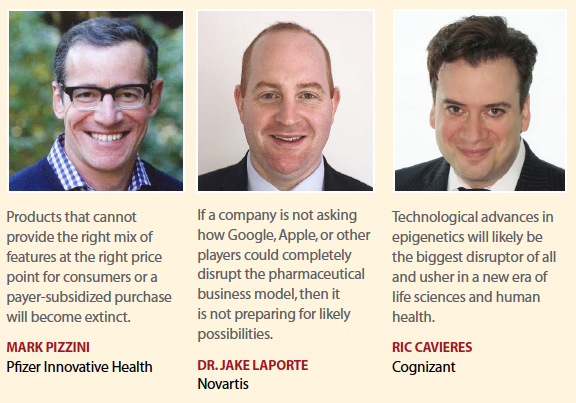 The healthcare reminder application safely and securely supports adherence with regard to proper dosage, timing, and persistence. It also has the potential to decrease healthcare costs that are caused by improper dose intake/overdoses over time.
The healthcare reminder application safely and securely supports adherence with regard to proper dosage, timing, and persistence. It also has the potential to decrease healthcare costs that are caused by improper dose intake/overdoses over time.
“At Janssen, we are committed to looking ahead and anticipating the needs of our customers by adopting innovative supply chain solutions to support improved patient outcomes," says Erwin Roovers, director, customer strategy, Janssen Supply Chain. “Being an easy and intuitive process is what will allow patients to make use of the solution as a part of their daily lives."
Janssen’s packaging engineering, manufacturing, quality, and IT teams partnered with external electronics and labeling suppliers to qualify and validate the technology.
To expand on the value, Janssen plans to make the Smart Packaging Technology available across the entire Janssen portfolio and give patients and physicians those additional tools to support their disease management programs.
“At Janssen, we believe in a future health care system where the focus will be on preventing and intercepting disease vs. waiting for a diagnosis and then initiating treatment,” Dr. Wiegand says. “A better understanding of an individual’s risk and susceptibility to a disease is critical, so platforms such as genetics, epigenetics, and the microbiome will be central to the care of an individual."
The Janssen healthcare reminder mobile application will work through the patient’s smartphone to set up medication reminders, which 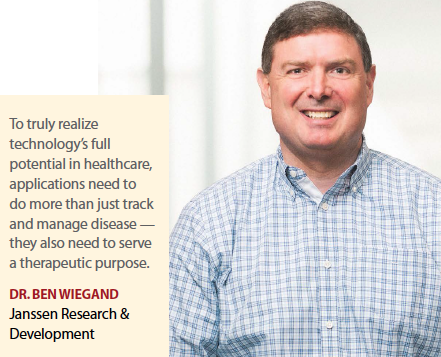 supports the patient by directing them to take their medication as prescribed by the doctor. They can also view reports and share them with the doctor, leading to discussion about the treatment.
supports the patient by directing them to take their medication as prescribed by the doctor. They can also view reports and share them with the doctor, leading to discussion about the treatment.
Mr. Roovers predicts that the integration of big data into an individual’s healthcare will become standard, and most likely will be done by many different contributing stakeholders and technologies of the healthcare system, which may limit the perceived benefit.
Anthony Schueth, CEO and managing partner of Point of Care Partners, brings up a point that many experts have acknowledged: For any innovative healthcare technology to have a true impact, it must be integrated into everyone’s workflow, especially physicians. For providers this means not having to step out of their regular patient workflow to access an application or new technology.
Mr. Schueth says that since about 90% of physician offices are using EHRs for clinical encounters, ePrescribing, and ordering labs, EHRs are also becoming the medium they use to communicate with their patients, including sending refill reminders, appointment reminders, education materials, and follow-up treatment plans.
“Ensuring that any new technology introduced into a practice is integrated into the EHR and hence into the practice workflow is the best way to ensure adoption, which will lead to a greater impact of the new technology on providers and their practice," he says.
Whenever new technology is introduced, growing pains are inevitable. Learning how to use a new device takes time. It is a short-term investment for long-term gains of efficiencies and improved care, but, in their busy day-to-day lives, patients and providers may not always see it that way. Chrissy Bell, global connected health leader at 3M Drug Delivery Systems, has observed that doctors often view technology as one more thing slowing them down in the care of their patients. The digital drug delivery devices must enhance the doctor-patient relationship rather than hinder it, she says.
“As high-tech drug delivery devices arrive on the market, we need to make sure patients and their healthcare providers are willing to 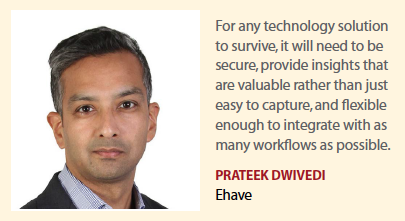 embrace them," Ms. Bell says. “Due to these factors, when developing a new drug delivery technology, we must include input from patients and providers at all stages of development and make the process as easy for them as possible."
embrace them," Ms. Bell says. “Due to these factors, when developing a new drug delivery technology, we must include input from patients and providers at all stages of development and make the process as easy for them as possible."
This type of healthcare technology will begin to have a significant impact when patients begin to realize that sharing their own data benefits the greater good.
“As we begin to aggregate patient data, we’ll be able to capture population trends for the first time," Ms. Bell says. “Those trends will open up insights and uncover information that may ultimately create better treatment plans that may result in better outcomes for the patient population as a whole."
A Look into the Future
Innovative healthcare technology can be met with a fair amount of skepticism, and should be, as people both inside and out of the industry question the adoption and long-term viability of some of the inventions in development. Advances have been discussed for several years — disruptive medical innovations from 3D printed drugs and organs, to sensors that monitor health parameters, to augmented reality in surgery, organs or labs on chips for clinical trials — and some still have not come to fruition. Innovations that will not survive their hype are those that don’t integrate with a connected care system, but stand alone as a single source of data, support, or treatment.
We asked our thought leaders, who all are embedded in the design and development, and implementation of such technologies, to separate hype from reality and discuss what disruptive technologies might survive into the future.
The difference between solutions that gain traction and those that will fade away will have more to do with the deployment than the technology itself, says Prateek Dwivedi, CEO, Ehave. For any technology solution to survive, it will need to be secure, provide insights that are valuable rather than just easy to capture, and flexible enough to integrate with as many workflows as possible.
“There will be a move toward using technology in the development phase to capture patient-reported outcomes that can support more robust label claims and, postmarketing approval, help speed or support treatment decisions and collect outcomes data to bolster reimbursement," Mr. Dwivedi says. “Technology that can gather such data will be key across indications, but particularly so in those areas such as CNS and mental health where treatment outcomes can be so hard to verify." An added bonus is that the technology, while saving organizations money, can support user interfaces that are accessible to patients and nonprofessional caregivers.
“One of the most promising technological innovations that will continue to gain traction in years to come is the use of invisible sensor technology," Mr. Ricci says. “While many companies have used standard wearable devices within clinical trials, more are moving toward monitoring health with sensors."
These advancements can help enable a minimally intrusive experience for patients and establish a clinical setting similar to a patient’s real-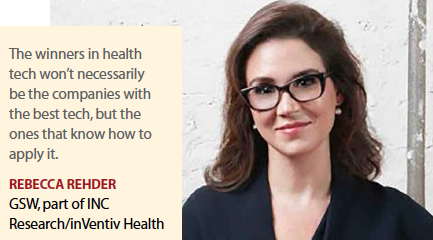 world environment. For example, the use of invisible sensors could be particularly effective in clinical trials involving children, as they are one of the most challenging populations to reach. Sensor technology can help researchers monitor the vitals of kids in real-time and within a comfortable setting.
world environment. For example, the use of invisible sensors could be particularly effective in clinical trials involving children, as they are one of the most challenging populations to reach. Sensor technology can help researchers monitor the vitals of kids in real-time and within a comfortable setting.
Mr. Ricci also suggests that artificial intelligence (AI) shows promise because it improves healthcare experiences by enabling a patient-centric connected care model. AI is poised to empower physicians with new tools for diagnosis and treatment, while patients are likely to benefit from streamlined access to healthcare organizations and content, advice on maintaining a healthy lifestyle, and simplified interactions among their healthcare team.
“AI has the ability to affect patient outcomes by reducing the time to diagnosis, creating a better understanding of disease progression, offering behavior modification support and improving market access through digital channels," he says.
Mark Pizzini, business technology lead, Pfizer Innovative Health, also throws his vote in for AI, as well as virtual assistants. (For more on AI, see related article.)
He thinks that wearables, however, may not live up to their hype.
“On the downside, the wearable space is getting very crowded, yet people’s capacity to wear these devices is significantly limited," Mr. Pizzini says. “Products that cannot provide the right mix of features at the right price point for consumers or a payer-subsidized purchase will become extinct."
Ric Cavieres, VP, life sciences consulting global leader, Cognizant, agrees that wearables may not stack up in the long run in the promises made.
“Wearables will be the industry’s betamax if this data are not properly integrated and aggregated with contextual data such as the patient’s diet and quantitative data such as EMRs and genetic profile data such as 23andMe," he says.
However, Rebecca Rehder, executive VP, director of client services at GSW Advertising, part of INC Research/inVentiv Health, believes wearables do have a role to play in patient health and will continue to gain traction in disease states that require long-term management, 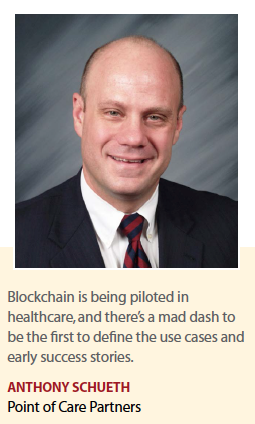 behavior change, and monitoring, for example diabetes. She also predicts a merging of clinical health with lifestyle wellness, so that wearables that monitor conditions loosely associated with lifestyle — heart disease, high cholesterol, depression, insomnia, and high blood pressure — will likely take root.
behavior change, and monitoring, for example diabetes. She also predicts a merging of clinical health with lifestyle wellness, so that wearables that monitor conditions loosely associated with lifestyle — heart disease, high cholesterol, depression, insomnia, and high blood pressure — will likely take root.
There is a future in both AI and wearables and smart devices and Georgia Mitsi, senior director, search evaluation and digital healthcare initiatives, Sunovion Pharmaceuticals, anticipates they will both continue to gain momentum.
“Wearables and smart devices can contribute to population health management, improve every day care, and enhance clinical trial design, due to the inclusion of objective data and continuous monitoring," Ms. Mitsi says.
Other areas where she expects to see growth are digiceuticals, or software as a therapy, which has the potential to improve people’s lives dramatically, especially in somewhat neglected therapeutic areas such as mental health and big data and advanced analytics, which can increase inputs in discovery research as well as the effectiveness of clinical development.
Both Mr. Ricci and Mr. Schueth include blockchain on their lists of technology that shows promise for the healthcare future.
“The latest tech hype is blockchain, which is what the digital asset and payment system called bitcoin was built on," Mr. Schueth says. “It’s being piloted in healthcare, and there’s a mad dash to be the first to define the use cases and early success stories."
Over the next few years, blockchain will emerge as a major trend in the regulation of healthcare transactions, Mr. Ricci predicts.
“Patient medical records from disparate providers will be linked for the first time, leading to improved service to patients, increased data privacy, and greater cost control," he says. “These technologies and others will form the foundation for a value-driven healthcare economy."
It could be a struggle, as blockchain requires participation of multiple stakeholders in the ecosystem. Pulling that together — and keeping it simple — will be a challenge.
“It’s a heavy lift but some powerful organizations are putting their weight behind it," Mr. Schueth says.
Any tool that allows the packaging of data and educational information in ways that are easily digestible by patients and healthcare providers will thrive, says Graham Goodrich, VP, diabetes marketing, Boehringer Ingelheim Pharmaceuticals.
“These types of technology innovations will be critical in improving patient behavior and outcomes, which are the underlying motivating factors for the healthcare technology industry and partnerships like the Geisinger predictive model," he says.
Daniel Gandor, director, digital innovation and corporate program management, Takeda Digital Accelerator, puts his money on augmented reality (AR) and virtual reality (VR) as technologies that continue to gain traction and will likely be core to consumer experience, including healthcare.
“These technologies are at a phase where use-cases are exploding," he says. “Sure, some applications will prove less fruitful, but no doubt elements of these technologies will survive long term."
Mr. Gandor also predicts that “voice" as a user interface will only continue to grow. “People interacting with technology via their voice and other non-touch interfaces is not hype and will be around for a long time, although it is still unclear which voice assistant or AI engine behind the scenes will capture and hold the lion’s share of the market," he says.
A technology will succeed if patients experience value from it, and can actively monitor their progress.
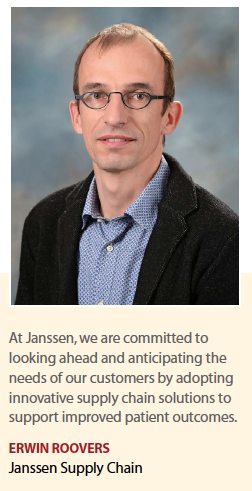 As patient empowerment is at the center of every conversation surrounding healthcare and drug delivery technology these days, using technology to augment existing care and provide the tools to allow patients to better manage their own conditions is key, but to gain traction, innovations in drug delivery need to go beyond what they currently offer.
As patient empowerment is at the center of every conversation surrounding healthcare and drug delivery technology these days, using technology to augment existing care and provide the tools to allow patients to better manage their own conditions is key, but to gain traction, innovations in drug delivery need to go beyond what they currently offer.
“We have to help a patient understand what the data means and how to use it," Ms. Bell says. “The focus needs to be on action-oriented devices that help coach patients to better outcomes."
This focus also needs to be present in the design phase. As scientists and engineers begin drafting new designs for drug delivery methods, they are now starting with the patient at the ground level and working their way up.
“That has not been the case, and it has caused a disconnect that has inadvertently left patient circumstances out of the equation," Ms. Bell says. “The benefit of this new approach is the ability to first understand patient circumstances and the challenges they present. Technology makes it easier to address those issues on the front-end, with the goal to increase better results on the back-end."
Anthony Arnold, CEO at SetPoint Medical, is bullish on bioelectronic medicine. He says it is poised to fundamentally change the way diseases are treated.
Similar to large and small molecule drugs, bioelectronic medicine therapies act through targeted mechanisms of action, causing the release of endogenous neurotransmitters to affect immune-mediated and receptor-mediated pathways.
Bioelectronic medicine uses small implanted devices to deliver targeted electrical pulses along existing physiologic pathways to activate mechanisms in the body, triggering the body’s biological responses to create a systemic disease-fighting effect lasting as long as a few days.
“Positive results from a first-in-human trial in rheumatoid arthritis have been published in Proceedings of the National Academy of Sciences, and an ongoing trial in Crohn’s disease is delivering promising results," Mr. Arnold says. “A combined total of more than $1 billion has been invested in bioelectronic medicine to date, by biopharmaceutical companies, device manufacturers, and investors."
Technological advances in epigenetics — switching off bad genes — synthetic biology, and genome editing will likely be the biggest disruptors of all and usher in a new era of life sciences and human health, according to Mr. Cavieres of Cognizant.
He says next in line behind epigenetics is the ability to successfully 3D and 4D print whole human organs such as the heart and the associated valves. And third on his list are DNA nanobots, which will likely be the next big thing with the ability to tackle major health issues, from killing cancer cells to repairing deceptive or damaged DNA.
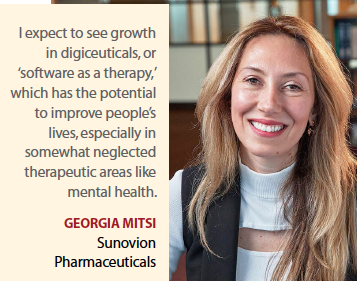 Ms. Rehder expects that by 2020, healthcare technology and the Internet of Things (IoT) will be manifesting in meaningful ways across healthcare.
Ms. Rehder expects that by 2020, healthcare technology and the Internet of Things (IoT) will be manifesting in meaningful ways across healthcare.
However, the success will be predicated less on the tech itself, and more on a mindset of creating an exceptional brand experience grounded in three simple fundamentals: humanity, credibility, and accessibility. In other words, the tech solution must add value to the human wellness experience either by addressing pain points, barriers to outcomes, or fulfilling a need.
“The operative word is human, being defined as not just the patient, but the HCP, salesforce, hospital system, or payer," Ms. Rehder says.
“In each case, no one is looking for a new app or gadget; people just want solutions to make their decisions smarter, their outcomes better, and their lives easier."
In terms of credibility, the high stakes of healthcare has a heavy burden to deliver believable, stable data, especially considering the complex universe of stakeholders — payer, HCP, patient, and hospital. For instance, when fitness trackers first came out, you could log a few miles tapping your hand on your leg, so they weren’t initially seen as a credible tool for informing actual behavior. Today, however, with large technology company’s investment in health, this is likely to change as the tech becomes more reliable, and stakeholders become more willing to partner with health tech to learn, optimize, and accept the data as evidence.
Accessibility is key, as most consumers are tethered to a handful of ecosystems, comprised mainly of Amazon, Google, Facebook, and Apple. Health tech innovation has to fit seamlessly into one of these systems to get the scale needed not just from a business standpoint, but from a data standpoint.
“The most exciting part of technology is the rate of change," Ms. Rehder says. “Imagine by 2020 wearables may be obsolete as we begin to wrestle with ingestables, injectables, and implantables. The winners in health tech won’t necessarily be the companies with the best tech, but the ones that know how to apply it."(PV)
~~~~~~~~~~~~~~~~~~~~~~~~~
How Technology Will Impact Healthcare In The Future
 Bill Blatt, National Director of Tobacco Control Programs, The American Lung Association
Bill Blatt, National Director of Tobacco Control Programs, The American Lung Association
Healthcare technology is already impactful, but it will take widespread access to healthcare to truly make an impact. People need to know what treatments are available for their disease, they need to know if their insurance covers the treatment. After that, we can more fully hey need to know how to get the treatment and then we will be able to more fully educate through technology how treatment can be optimized.
(Mr. Blatt was involved in the ALA collaboration with Pfizer regarding the Quitters Circle App.)
Kristian Hart-Hansen, Head, LEO Pharma Innovation Unit, LEO Innovation Lab
 Technology will have an impact where consistent monitoring is necessary to manage a disease, such as chronic skin conditions, in particular with psoriasis and eczema. These conditions require constant monitoring and stringent treatment adherence to manage symptoms. For example, most patients typically have to wait long periods between consultations with the dermatologist, meaning that the dermatologist often doesn’t get to examine the flare-up at its worst, and treat the patient accordingly. This information gap can be filled with a digital solution that can help the patient record and monitor their condition, in particular, how the flare-up pattern responds to external triggers.
Technology will have an impact where consistent monitoring is necessary to manage a disease, such as chronic skin conditions, in particular with psoriasis and eczema. These conditions require constant monitoring and stringent treatment adherence to manage symptoms. For example, most patients typically have to wait long periods between consultations with the dermatologist, meaning that the dermatologist often doesn’t get to examine the flare-up at its worst, and treat the patient accordingly. This information gap can be filled with a digital solution that can help the patient record and monitor their condition, in particular, how the flare-up pattern responds to external triggers.
We are currently working on an app called Imagine that is directly addressing this need, using computer vision and machine learning technology.
Ibs Mahmood, Head, Clinical Technology Business, DrugDev, a QuintilesIMS company
 There are lots of interesting molecules collecting dust in research labs because pharma companies think it’s too expensive bring them to market. But automation can halve the cost of a clinical trial. Single, comprehensive technology suites enable sponsors to manage multiple study-related functions; provide updates about the study; allow sites to schedule and screen patients; provide educational tools and videos; and manage and upload all study-specific documentation. They can become a trusted source of information that give sponsors site metrics, timelines, and vital windows into their operations as they work to find new treatments.
There are lots of interesting molecules collecting dust in research labs because pharma companies think it’s too expensive bring them to market. But automation can halve the cost of a clinical trial. Single, comprehensive technology suites enable sponsors to manage multiple study-related functions; provide updates about the study; allow sites to schedule and screen patients; provide educational tools and videos; and manage and upload all study-specific documentation. They can become a trusted source of information that give sponsors site metrics, timelines, and vital windows into their operations as they work to find new treatments.
We must also give investigators a clinical trial platform so the power rests with those who are familiar with the patients. When we give doctors working with clinical trial patients the modern technology they need to run trials. We can create a de facto standard that will drive behavior. The goal is to equip them with simple, easy to use technology platforms to run trials. Only then will technology have a real impact, opening trials to thousands more patients. Pharma will dust off those old molecules, bring more new medicines to market, and save more lives.
ds to external triggers.We are currently working on an app called Imagine that is directly addressing this need, using computer vision and machine learning technology.
Ibs Mahmood, Head, Clinical Technology Business, DrugDev, a QuintilesIMS company
 There are lots of interesting molecules collecting dust in research labs because pharma companies think it’s too expensive bring them to market. But automation can halve the cost of a clinical trial. Single, comprehensive technology suites enable sponsors to manage multiple study-related functions; provide updates about the study; allow sites to schedule and screen patients; provide educational tools and videos; and manage and upload all study-specific documentation. They can become a trusted source of information that give sponsors site metrics, timelines, and vital windows into their operations as they work to find new treatments.
There are lots of interesting molecules collecting dust in research labs because pharma companies think it’s too expensive bring them to market. But automation can halve the cost of a clinical trial. Single, comprehensive technology suites enable sponsors to manage multiple study-related functions; provide updates about the study; allow sites to schedule and screen patients; provide educational tools and videos; and manage and upload all study-specific documentation. They can become a trusted source of information that give sponsors site metrics, timelines, and vital windows into their operations as they work to find new treatments.
We must also give investigators a clinical trial platform so the power rests with those who are familiar with the patients. When we give doctors working with clinical trial patients the modern technology they need to run trials. We can create a de facto standard that will drive behavior. The goal is to equip them with simple, easy to use technology platforms to run trials. Only then will technology have a real impact, opening trials to thousands more patients. Pharma will dust off those old molecules, bring more new medicines to market, and save more lives.





